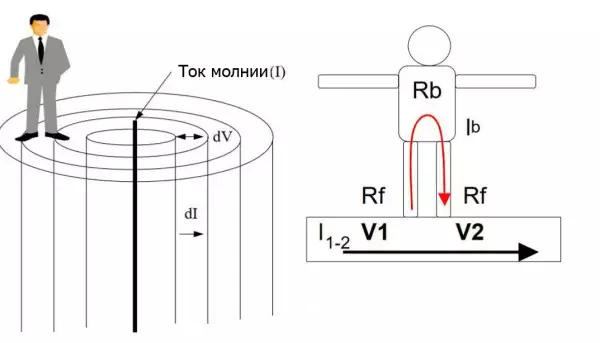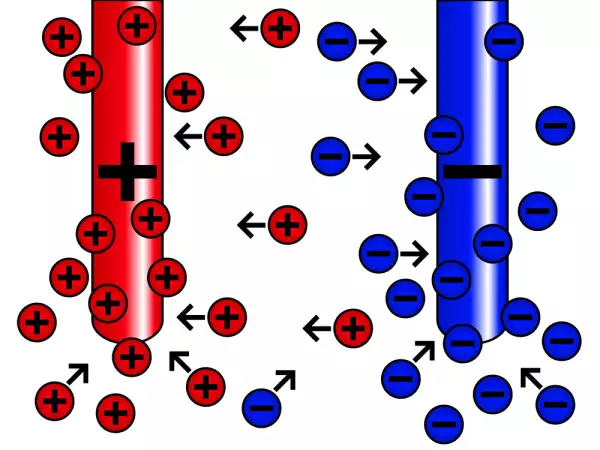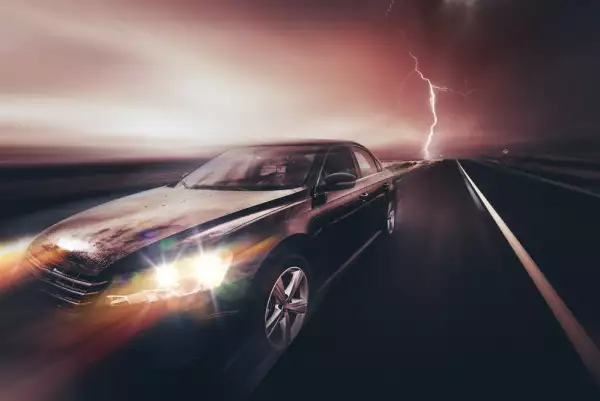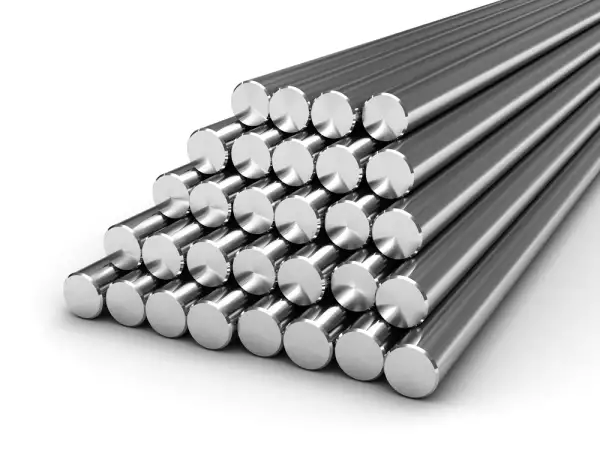From the series of articles "Lightning protection for beginners".
Not only Elijah, but any reasonable house owner thinks about this question, when he proudly inspects his newly built house, a new warehouse, a shopping center or a new production department. The question is not idle. Lightning protection protection costs money, in some cases, not small, and thunderstorms in our area are not so frequent, they last for an hour or two maximum and the majority of lightning breaks between the clouds without rushing to the ground. There are houses built long time ago near. You can't see any lightning rods there. Everything is fine and noone complains.
We should probably start with that. You really don't see lightning rods, but who said that the buildings are not protected from lightning? Lightning protection is not only the installation of lightning rods. To protect from lightning today, we have to create a whole armory of protective measures, because lightning is very inventive in choosing weapons and prefers workarounds to a frontal attack.
Russia was lucky with the location. Being entirely in the temperate latitudes, it knows nothing about tropical storms. However, there happen 3-4 lightning strikes a year per every square kilometer of the country. A rare house occupies more than 250 m2. According to the statistics, for such an area in the central Russia, there happen only
N = 250: 4 × 1000000 = 0.001 lightning per year. This means that the constructed building should wait for about T ≈ 1 / N = 1000 years before lightning hits it.
An impatient reader may stop reading, thinking that such a rare event does not deserve attention. An expert will immediately indicate a blunder, noting that the estimate does not take the main thing into account - the height of the building. He will say that any object, lifting above the ground, attracts lightning strikes from the distance of about three of its height h. This fact is verified by many experiments and doesn't cause any doubt. To get the sqaure from which the lightning consitrict along the exterior perimeter of your facility, it is necessary to draw a line spaced from it to Rcons = 3h. The square inside the outlines boundary will be the area of lightning constricton Scons. The reader can calculate it in any way, even by the cells on the lined paper. For a building with the length L and width D an elementary square is enough, though it is somehow overestimated according to the school formula for the square of a rectangle.

In this example, we have the cottage of 250 square meters2 for which L = 15 m and D = 10 m and height h = 10 m, we get Scons = 5250 m2 - 21 times more than the actual square. Accordingly, the probability of a lightning strike increases. In fact it should be expected approximately every 50 years. This is quite a significant time, comparable to human life, moreover the statistics doesn't explain when the predicted strike will exactly happen in a half-century interval.
The frequency of lightning strikes into an object rapidly grows with the object's height. A hundred-meter mast of a large stadium lighting will almost annually meet lightning. The builders have to worry in advance about the safe drain of the lightning current to the ground. Otherwise the well-known case of the lightning burn of several players on the football field will become systematic.
Now is the time to get acquainted with lightning closer. It is more or less clear with its direct strike. The plasma channel with the temperature of about 30 000 C doesn't leave hopes for a favorable outcome. It is able to burn through the metal roof up to 4 mm thick, ignite almost any combustible material. Mechanical destructions from lightning are not so significant. As a rule, they result after a very rapid evaporation of moisture or generation of gases at the decomposition of plastic materials along the lightning current line. A classic example of this is long and wide strips of bark, which are ripped off the tree at a lightning strike. Composition materials, so popular today, can suffer the same. Fortunately, they are not so often used in urban planning.
The main weapon of lightning is its electromagnetic field. An average lightning current is close to 30 000 A, for an extremely powerful, it is 6 - 7 times stronger. Feel this value by comparing it with the current of a strong domestic iron (10 A) or an industrial welding machine (100 A). This is quite a different scale. Lightning current pulse duration rarely exceeds 0.0001 s (in lightning protection a second is too much time, microseconds are used). Not much heat will be generated for 1000 ms, that is why conductors of quite a moderate diameter are used to divert the lightning current into the ground (~ 1cm). Another time parameter is much more important - current growth time to the peak value. Here lightning is an absolute champion, because its current may increase over time at the rate of 200 000 000 000 A / s. In our life there is no phenomena that could be used for a visible representation of such a fantastic value.
For myself, I invented the following. Imagine a person at the distance of 10 m from the lightning rod (such gaps often appear in the standards for lightning protection as hardly to be safe). His raised arms form the contour of the square 1 m2. In such a contour, lightning with the ultimate growth speed induces EMF of magnetic induction of 4000 V. The voltage in your house network is almost 20 times less, however, do not try to compare it on yourself, puting a pair of nails into the wall socket. Household appliances won't stand twenty-fold surge. Let alone low-voltage devices - computers, iPods, fire alarm sensors, perimeter protection equipment, television amplifiers. There are many expensive devices in a modern house, which can become an easy prey to lightning.
Your home is your castle. As the Englishmen say. The most vulnerable place os this castle is high-voltage power line 220/380 V, which delivers electricity to your house. Storn surges penetrate into the house together with it. If not to talk about big cities, electricity in our country is still carried out on the overhead lines of ordinary execution. Its wires are suspended on support posts at the distance of 40 - 50 cm from each other to prevent whipping with wind. Stretching from the substation to your home to 200 - 300 m, these wires form quire a large contour. Even a distant lightning enduces dangerous voltage with its magnetic field. A few years ago I had an opportunity to verify the efficiency of a remote lightning attack. A lightning strike to the ground happened at the distance of 200 -300 meters from my one-storey house. There was a slight delay (~ 1 second) between the flash and the thunder. I was left without the antenna amplifier. The neighboring houses were left without TVs, microwave ovens, music centers and other expensive equipment. You see,a lightning strikes within the radius of 200 - 300 m from the house can't be called an unlikely event. It is better not to risk it and take care of protection means.
My neighbor, finishing construction of a new home, came to ask for an advise about the arrangement of its lightning protection. I said that he was very late with the beginning of works. Lightning protection tools should be selected at the project stage. Only then they won't be too expensive and extremely effective. The fact is that the experts are able to combine many lightning protection elements with building structures. Of course, that should be provided in advance.
Lightning danger should not be exaggerated, just like television reporters do, showing horror stories-and giving useless and sometimes even harmful advices to the viewers. But it is more dangerous to neglect this danger. A homo sapiens should see a specialist to estimate the possible consequences of the emergency and to provide protection means against them.
E. M. Bazelyan, DEA, professor
Energy Institute named after G.M. Krzyzanowski, Moscow
We hope that in the future this site will perform the role of an elementary textbook for self-defense against lightning. We plan to continually post articles about the real dangers of lightning electricity and modern means of lightning protection here. They are designed to help to sort out the existing problems and to estimate the ways to solve it.
See also:
- Free webinars for project designers with Professor E.M. Bazelyan
- Free webinars for project designers with Dr. M. Loboda
- A series of articles "Lightning protection of oil and gas facilities"
- A series of articles "Lightning protection of residential and public buildings"
- Grounding in lightning protection - answers to frequently asked questions in the design
- Consultations on the selection, design and installation of grounding and lightning protection systems
Related Articles:
 Grounding in the cellar of the single-family house - is it possible?
Grounding in the cellar of the single-family house - is it possible?


 Step Voltage: Dangerous Obscurity and Reliable Protection
Step Voltage: Dangerous Obscurity and Reliable Protection
 Nature of Electrochemical Corrosion
Nature of Electrochemical Corrosion
 Public Safety in Land Transport in case of Direct Lightning Strike
Public Safety in Land Transport in case of Direct Lightning Strike


